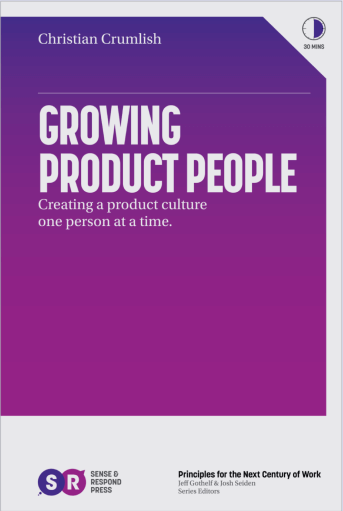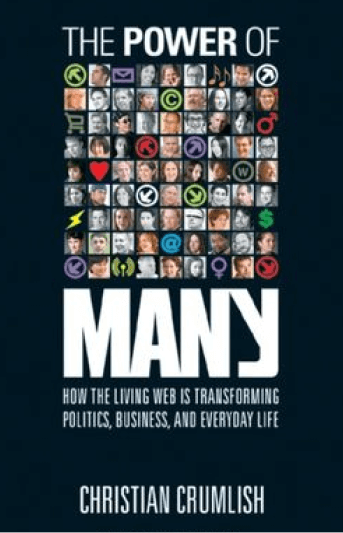Books

Product Management for UX People
More and more, designers are grappling with product management—as a peer discipline, as the job title of a boss or teammate, and as a future career destination.
But there is surprisingly little help for designers who seek to understand what it takes to manage products and services.
In Product Management for UX People: From Designing to Thriving in a Product World, Christian Crumlish plumbs the intersections and gaps between design and product management for both designers who want to work with product managers and designers who want to become product managers.
Sign up for the publisher's mailing list so you can be notified as soon as Product Management for UX People becomes available for purchase.
Sign Me Up
Where do great product people come from?
Can you hire them? Are they hiding inside your organization? Can you grow them from engineers? Designers? Project Managers?
It turns out that you can. Product managers, product designers, product developers can all grow and enhance their capabilities and capacity to work together productively by deepening their understanding of the full spectrum of the product mindset. And when you do that, you start building a product culture, one person at a time.
In this book, Christian Crumlish describes the expertise, skills, and frameworks that come together in every great product person—and shows you how you can put these ideas to work inside your organization.
Sign up to be on the publishers mailing list so you can be notified as soon as Growing Product People becomes available for purchase.
Sign Me Up
Designing Social Interfaces
Designers, developers, and entrepreneurs today must grapple with creating social interfaces to foster user interaction and community, but grasping the nuances and the building blocks of the digital social experience is much harder than it appears. Now you have help.
In the 2nd edition of this practical guide, you’ll learn from our hard-won insights into what works, what doesn’t, and why. With more than 100 patterns, design principles, and best practices, you’ll learn how to balance opposing forces and grow healthy online communities by co-creating your UX with your users.
Highlights include understand the overarching principles before applying tactical design patterns, cultivating healthy participation in misbehaving users, patterns for adding social components to an existing site, encouraging users to interact with eachother, using a rating system to build a social experience around products or services, exploring numerous examples of each pattern (with an emphasis on mobile apps) and learning how to apply social design patterns to enterprise environments.
Buy Now
The Power of Many
The development of social networks on the Web touches countless aspects of our everyday lives. With instant access to people of similar mindsets, we can readily form partnerships with more people and in more ways than ever before.
Through a series of pertinent case studies and interviews with leading thinkers and doers in this rapidly evolving field, Christian Crumlish uncovers universal themes and lessons learned. He illustrates how we use peer-to-peer technologies--web services, blogs, mobile phone SMS, and more—to accomplish widespread goals. He also suggests how we can take even more advantage of these technologies to connect with people who have similar interests.
Discover how Howard Dean's campaign used the Internet to take a little-known candidate a long way. How activists arrange public meetings and drive letter-writing campaigns. How individuals find much-needed help for personal issues. How artists promote and air their creative genius. How business people and singles seek potential partners. And much, much more.
Buy Now“A product manager is not the CEO of the product.”
Christian Crumlish, ‘Growing Product People’